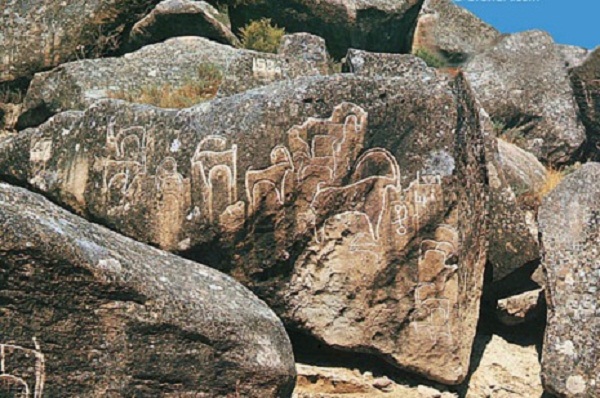Gobustan Rock Art Cultural Landscape - PHOTOS, V?DEO

Gobustan preserve is widely known with its rock engravings, monuments of primitive culture not only in our republic but also on the world scale. These monuments are ancient drawings, cupules for preparing fluid diet and gathering of rain water, two-sided hollows for tying-up animals, signs, tamgas, ancient inscriptions and so on. Revealed and registered on more than a thousand rocks and stones these monuments were created by an ancient man and are the reflection of his agricultural and intellectual activity.
Petroglyphs of Gobustan are artistic chronicles of the past. They bear a great importance both for the study of the pre-history of humanity and for the study of lots of spheres of primitive art: graphics, music, dances, the art of stone processing, etc.
Gobustan monuments cover the period of approximately 20 million years beginning since the end of Upper Paleolith till the beginning of our era.
For the first time rock carvings of Gobustan were found out in 1939. They were discovered and studied by I.M. Jafarzade. Systematic study of rock carvings started since 1947. Before the formation of Gobustan preserve I.M. Jafarzade revealed about 4 thousand rock carvings on more than 700 rocks on the territory of Beyukdash, Kichikdash and Jingirdag (Jingirdag Mountain is located behind Kaniza Mountain) Mountains. After Gobustan preserve was formed (1966) archaeologist S.Rustamov revealed more than a thousand of ancient rock carvings. Research works on the territory of Gobustan preserve are continued by PhDs F.Muradova and M.Farajova. At present more than 6 thousand rock carvings and more than 100 thousand objects of archaeological material are registered in Gobustan collections.
Today we will get acquaintance with rock carvings of Beyukdash Mountain that comprise the basic part of rock carvings collection. In remote past the climate of Gobustan was more humid. The rainfall amount was comparatively more. The grass cover was marked with diversity richness of fodder crops. In Gobustan, like in savannah, numerous herds of herbivorous animals were pasturing. Ancient people drove the herds of wild animals along the narrow paths together on the peaks of mountains and in such way they were entrapped. Then, fearing them with noise, cries and flame drove them to the brim if precipice and made the fall down. As a result of this they got food for themselves.
On their themes rock carvings of Gobustan are marked with diversity. These are mainly depictions of men, women, ancient ox, cheetah, gazelle, lion, boar, etc. Various signs, tamgas, and also depictions of snake, lizard, swastika, sun, cross, etc. were registered as well. At the same time here one can come across depictions of collective labor scenes, as well as scenes of hunting on different animals and battle scenes.















































